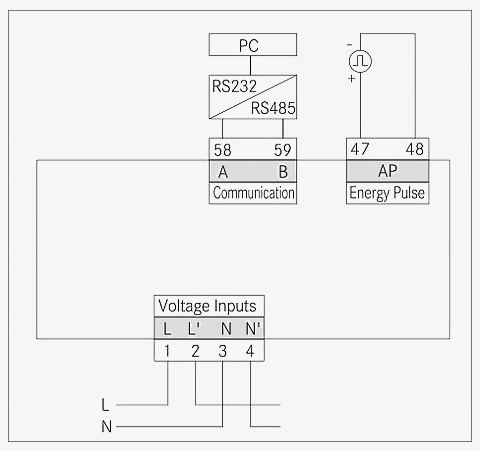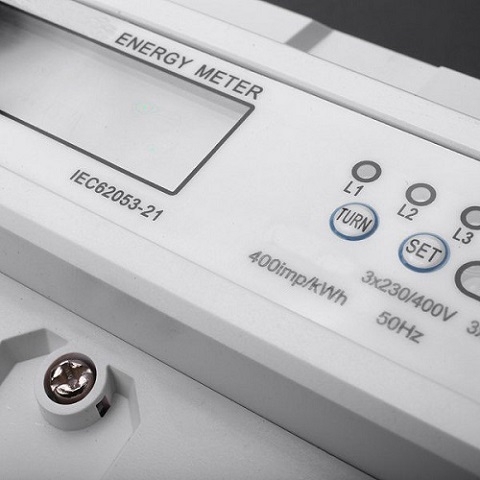An energy meter, also known as an electricity meter or watt-hour meter, is a device used to measure and record the consumption of electrical energy in residential, commercial, and industrial settings. It is an essential tool for utilities and customers alike to monitor and manage electricity usage and accurately calculate billing. Before we use the energy meter, how should be installed to make it play a better performance and operation, the next will be sisco.com for you to answer the question.
Installation of Energy Meters
Installing an energy meter typically involves a series of steps to ensure that it accurately measures the electrical energy consumption of a building or a specific electrical circuit. sisco offers a general guideline for installing an energy meter.
Safety Precautions
Ensure the power to the circuit you're working on is turned off at the main circuit breaker or fuse box. Use a voltage tester to confirm that the circuit is de-energized.
Wear appropriate personal protective equipment, including insulated gloves and safety goggles.
Select the Location
Choose a suitable location for installing the energy meter. It should be easily accessible and protected from physical damage, weather, and tampering.

Gather Materials and Tools
Obtain the energy meter, a mounting bracket or enclosure, and any necessary conduit or wiring.
You'll need electrical tools, such as wire strippers, pliers, a screwdriver, and a drill, as well as wire connectors and cable clamps.
Install the Mounting Bracket or Enclosure
Secure the mounting bracket or enclosure to the wall or mounting surface. Make sure it is level and securely anchored.
Install a Conduit (if necessary)
If you're using a conduit to protect the wiring, install it now. The conduit should run from the energy meter to the electrical panel.
Connect the Wiring
Run the appropriate electrical wiring from the electrical panel to the energy meter. Follow local electrical codes and standards for wire type, size, and color coding.
Connect the wiring to the appropriate terminals on the energy meter. There are typically three connections: line (incoming power), load (outgoing power to the load), and neutral.
Secure the Energy Meter
Attach the energy meter to the mounting bracket or enclosure, ensuring it is securely fastened and level.
Label the Wiring
Properly label the wiring at both ends to indicate their purpose and voltage level.
Power On and Test
Turn on the power at the circuit breaker or fuse box.
Test the energy meter to ensure it is working correctly and accurately measuring energy consumption.
Record Meter Readings
Record the initial meter readings. This will be important for tracking energy consumption over time.
Seal and Protect the Meter (if required)
Depending on local regulations, you may need to seal the energy meter to prevent tampering. Follow any specific sealing procedures if necessary.
Final Inspection
Have the installation inspected and approved by a qualified electrical inspector if required by local regulations.

How to Maintain the Energy Meter
Clean the Meter
Periodically clean the meter and its surroundings to prevent dust, dirt, or debris from accumulating on the meter's components. Use a soft, dry cloth for cleaning.
Tighten Connections
Check and tighten any electrical connections to the meter to ensure they are secure. Loose connections can lead to inaccuracies in energy measurement.
Verify Seals (if applicable)
If the meter is required to be sealed for tamper prevention, inspect the seals regularly to ensure they are intact. If any seals are broken or tampered with, investigate the cause and take appropriate action.
Calibration and Testing
Periodically, the energy meter should be calibrated and tested for accuracy. This can be done by a qualified technician or a calibration service provider. Calibration frequency may vary depending on local regulations and the specific type of meter.
Data Logging and Record Keeping
Maintain records of meter readings, calibrations, and maintenance activities. These records can be crucial for tracking energy consumption and ensuring compliance with regulations.
Software and Firmware Updates
If the energy meter has associated software or firmware, keep it updated according to the manufacturer's recommendations. Updates may include bug fixes, security improvements, and enhancements.
Check for Unauthorized Access
Regularly inspect the meter and its enclosures for signs of unauthorized access or tampering. Ensure that only authorized personnel have access to the meter.
Protect from Environmental Factors
Ensure that the energy meter and its enclosures are protected from extreme environmental conditions, such as excessive moisture, temperature fluctuations, and exposure to direct sunlight.
Keep in mind that the specific steps and requirements for installing an energy meter can vary depending on your location and the type of energy meter being used.

